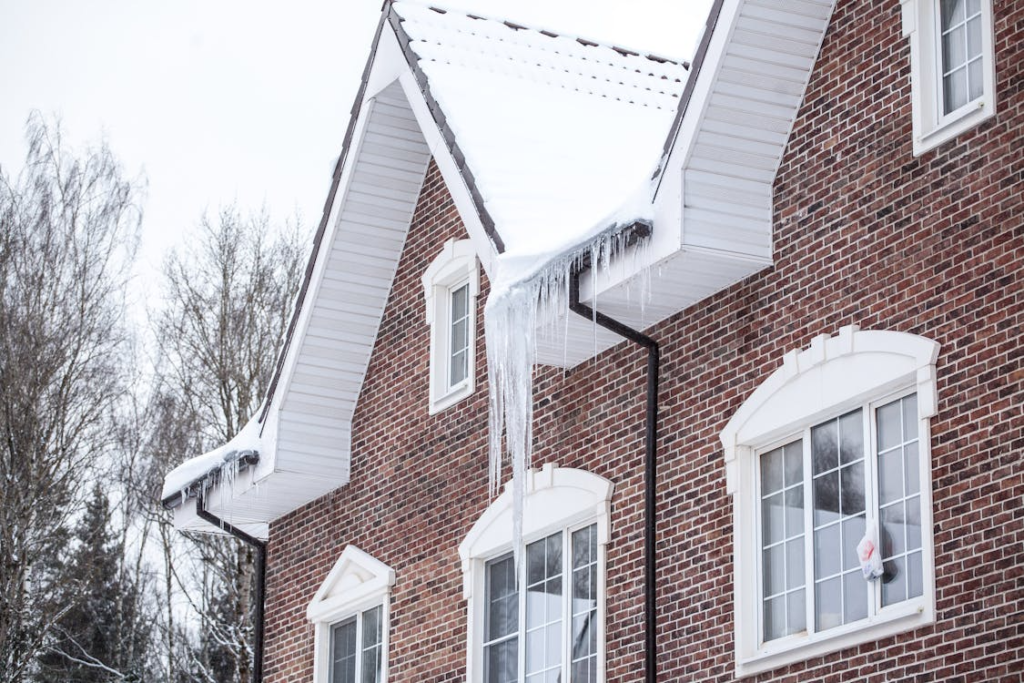Boston’s winters bring snow, sleet, frigid winds, and relentless freeze-thaw cycles. While picturesque, this seasonal pattern quietly wreaks havoc on masonry structures. Over time, even well-built homes and buildings begin to show the effects of winter masonry damage, especially if left unmaintained. From surface wear to deep structural deterioration, cold weather can stress every component of brick, stone, and concrete exteriors.
For property owners, understanding the risks is key to maintaining long-term durability. The effects aren’t always immediate, but by spring, the signs become hard to ignore.
Mortar Joint Deterioration
In many brownstone restoration and historic brick buildings, aging mortar is vulnerable to extreme cold. As moisture freezes and expands, joints begin to crumble. This allows further water penetration and compromises the structure’s integrity. If neglected, deterioration spreads rapidly and requires extensive brick and stone repointing work to restore.
Spalling and Surface Flaking
Concrete repair projects frequently deal with spalling, where surface layers peel off or break apart due to repeated freeze-thaw cycles. This type of damage commonly affects entry steps, foundations, and walkways, especially after winters with fluctuating temperatures when the expansion and contraction cycle is most intense.

Freeze-Thaw Cracking
The most damaging culprit during winter is the freeze-thaw cycle. Moisture seeps into microscopic pores or existing cracks in brick and stone restoration projects. When temperatures drop, that trapped water freezes and expands, creating internal pressure. As it thaws, it leaves wider cracks, gradually weakening the structure. This cycle repeats dozens of times each winter, breaking down stone walls, repairs, and even the toughest materials.
Foundation Stress and Movement
The soil surrounding buildings expands as ground moisture freezes. This places lateral pressure on foundation walls, causing cracking and even structural movement. These signs are familiar in older properties needing foundation waterproofing, and are often more severe in areas with poor drainage or outdated construction methods.
Decorative Damage to Historic Masonry
Boston’s brownstones and historic masonry buildings feature intricate carvings, lintels, and cornices, all vulnerable to moisture. Freeze-thaw cycles can cause these decorative elements to fracture or detach. The delicate nature of stone lintel repair & replacement work makes this one of the most difficult types of winter-related damage to repair.
Understanding the Long-Term Impact
Though winter masonry damage can go unnoticed during the colder months, its effects accumulate year after year. Left unchecked, these issues evolve into major structural and safety concerns, requiring the services of expert commercial restoration contractors.
From historic brownstones to commercial buildings, Boston’s masonry structures require close attention before and after each harsh winter season. Monitoring for early signs of damage is critical in preserving their beauty and structural integrity for years to come.
For expert assessment and reliable restoration, trust AMN Masonry, Boston’s specialists in historic and modern masonry care. With decades of experience, we offer tailored solutions from brick and stone repointing to full building restoration services in Boston.
Contact us today to schedule an inspection and protect your property from winter’s lasting effects.
